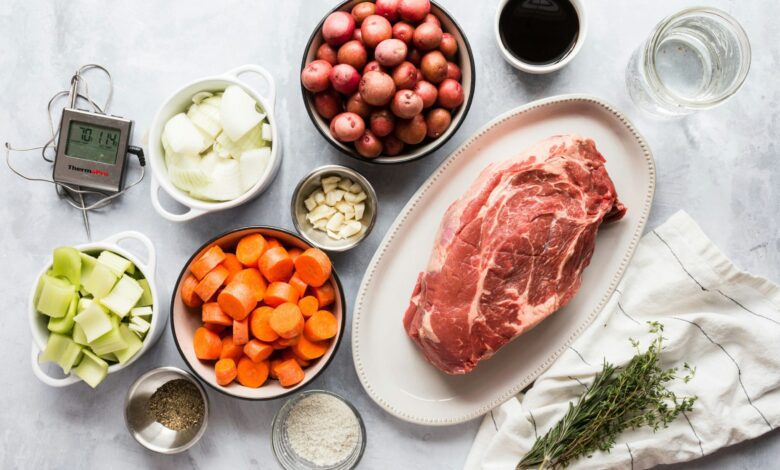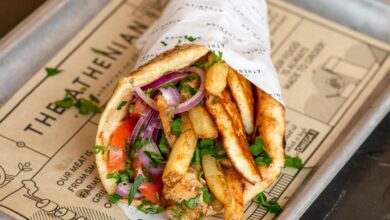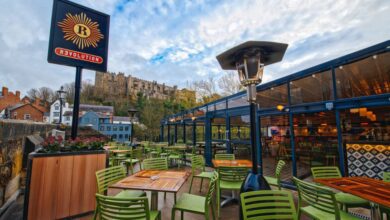Confronting the realities of foodservice inflation
Beef prices have hit record highs, driven by forecasts of strong demand and reduced production throughout the course of this year. For restaurateurs, these fluctuations demand constant adaptation

Register to get 1 more free article
Reveal the article below by registering for our email newsletter.
Want unlimited access? View Plans
Already have an account? Sign in
The latest CGA Prestige Foodservice Price Index (FPI) brought a rare moment of relief to the UK. January 2025 marks the 19th consecutive month of slowing year-on-year inflation. Monthly inflation across the basket of measured items held at 1.8%, while month-on-month inflation remained flat at 0.0% – a welcome pause for an industry battered by rising costs. But stability may be short-lived. Global economic and political uncertainties continue to loom, threatening fresh turbulence in the months ahead.
Only one of the Index’s ten categories – fish – saw year-on-year deflation. Just three categories experienced month-on-month price drops. Meanwhile, beef prices have hit record highs, driven by forecasts of strong demand and reduced production throughout the course of this year. There are pockets of relief, though. Olive oil prices, after years of punishing increases, have finally started to decline.
Other market forces continue to exert pressure. Aluminium prices surged 17.9% over the six months to January, spurred by Chinese demand, rising energy costs, supply disruptions and fears of a global trade war. A fresh layer of uncertainty came from the United States’ recent 25% import tariff on aluminium. It’s too early to measure its full impact, but it could send shockwaves through supply chains, adding further volatility to foodservice pricing.
Meanwhile, crude oil prices climbed 11.4% month-on-month, fuelled by geopolitical tensions, delays in OPEC+ production increases and heightened global demand. Natural gas prices, too, followed an upward trend, rising by 4.7% month-on-month.
For restaurateurs, these fluctuations demand constant adaptation. Michelin-starred chef Tom Shepherd, operator of Upstairs by Tom Shepherd in Lichfield, has felt the pressure firsthand. “It’s been a gradual increase since we opened in October 2021. Every season, as our menu changes, we see the rising cost of ingredients,” he says. “The key is finding a balance – getting more out of each ingredient, stretching them further, and looking for alternatives.”
Dairy prices have tripled since Shepherd first launched his restaurant. Some desserts that were once financially viable are now too expensive to justify. But instead of passing every cost increase onto the customer, his team has embraced creativity. “Fine dining restaurants have to adapt differently than chains,” notes Shepherd. “Chain restaurants have fixed menus, but fine dining is all about innovation and seasonality. Guests come for the experience rather than a specific dish. We can’t compromise on quality. If we have to raise prices, we will – but we won’t cut corners.”
Instead of compromising, Shepherd has found efficiencies elsewhere, forging direct relationships with independent suppliers. Cutting out the middleman has helped him manage costs while also supporting small businesses. His approach has worked: “Some restaurants charge £250-£300 per person. We can’t do that here. But we’re fully booked for the rest of the year.”
The question is whether customers are still willing to pay premium prices in an inflationary climate. For Shepherd, the answer is clear: “It’s all about perceived value. If a meal costs £300 but delivers an experience that justifies it, guests will pay. It’s not just about foie gras, truffle, and caviar – it’s about balance. Customers need to walk away feeling their experience was worth the price.”
Shama Rahman, head chef at Indian and Pakistani restaurant My Nawaab in Manchester, shares a similar story but from a different perspective. “Food inflation has impacted everything – ingredients sourcing, menu planning, our bottom line. Margins are tighter, and we spend more time making sure we buy the right products at the best price,” she says.
To stay competitive, My Nawaab has introduced new revenue streams, including a delivery service. The venue has also strategically adjusted its menu to ensure quality remains high while making cost-conscious ingredient swaps. “We’ve seen a shift in customer behaviour,” Rahman notes. “More guests are choosing buffets over à la carte. Buffets offer variety and perceived value, which appeals to families and a wider audience. Promotions and offers have helped attract more customers, and we plan to continue those strategies.”
Looking ahead, Rahman sees little relief on the horizon. “Food costs remain high, and we expect that to continue. Price-conscious customers are one challenge, but availability is another. Sometimes we simply can’t source key ingredients. If supply shrinks, prices rise further. We’re doing everything we can to shield customers from those increases.”
Shepherd echoes Rahman’s sentiment on foodservice inflation, saying that it is unlikely to stabilise anytime soon because it isn’t just affecting food – it’s hitting everything from wages and rent, to services and taxes. “Restaurants have no choice but to increase prices to cover costs. That said, we don’t just pass the rising costs on to the consumer. We focus on efficiency – getting more out of our ingredients, refining our operations, and hiring the right staff.” In fact, Shepherd added that staffing costs turned out to be a bigger concern than food costs due to how steeply they have risen. “Since opening, we’ve grown from nine to 24 full-time staff. We’ve had to scale up to meet customer expectations, especially after earning our Michelin star. Maintaining that level of excellence requires the right team, and we’re committed to keeping them.”
In the discourse surrounding foodservice inflation, it is hard to avoid the rising costs of labour at the same time since they are so intertwined. Danna Gurbaxani, chief revenue officer at Vita Mojo, says: “The hospitality industry is facing some of the most brutal rising costs, with National Insurance and minimum wage increases coming into effect in April. For operators, it’s no longer enough to simply cut labour budgets – most are already operating with the slimmest labour models possible.”
A UKHospitality survey found that 70% of hospitality businesses plan to reduce employment due to these changes, while 60% will cancel planned investment. For some, the pressure may be too much: 15% expect to close at least one site.
Gurbaxani sees technology as a crucial tool for survival. She notes: “Introducing digital order channels like self-order kiosks and click-and-collect allows businesses to use upselling techniques that increase basket value. AI-driven menu analysis helps push the most profitable items at the right time, maximising revenue per transaction.”
Honest Burgers has already embraced this shift, according to Gurbaxani, having launched Vita Mojo’s Order Management System to manage the entire process within a single system. She says: “[Through Honest Burgers’ adoption] it has helped us expand into our new QSR concept, Smash + Grab, which allows us to enter high-footfall areas and maximise convenience.”
Automation is another key area for operators looking to offset rising costs. Kitchen Display Systems streamline orders, prevent errors, and speed up service. Self-order kiosks provide automated recommendations, boosting average transaction value while ensuring smooth operations.
Consumers, particularly younger demographics, are embracing these tech-driven experiences. A survey by KAM found that 91% of Gen-Z customers and 80% of Millennials would visit a site more often if self-order kiosks were available. “However,” Gurbaxani notes, “these demographics also have high expectations for ease of use, smooth UI, and stylish branding. Digital menus need to offer a seamless experience to stand out.”
Looking ahead, Gurbaxani predicts a shift toward more sustainable, scalable business models. “Operators that have already digitised will now look for Version 2.0 – how to stay current and profitable without massive investment. Many will experiment with smaller, high-footfall concepts that prioritise convenience and speed, testing new waters with data-driven confidence.”
The industry may be seeing a brief pause in inflationary pressures, but few believe the storm has truly passed. Costs continue to rise – not just for food, but for wages, utilities, rent and services. For restaurants like Upstairs by Tom Shepherd and My Nawaab, and for operators embracing new technology, the challenge remains the same: adapt, innovate, and hold the line on quality, even as costs climb higher. The battle isn’t over yet.







